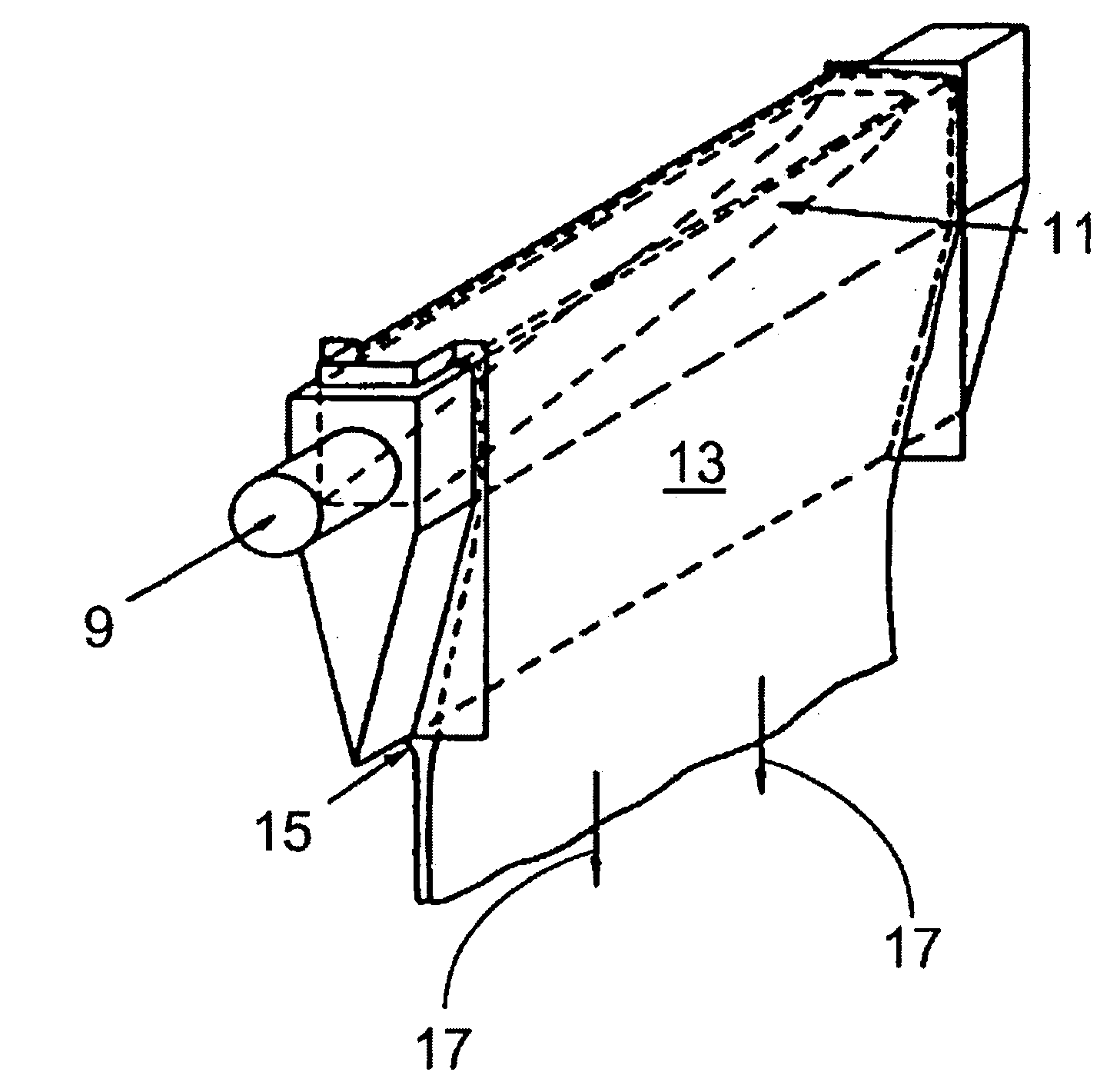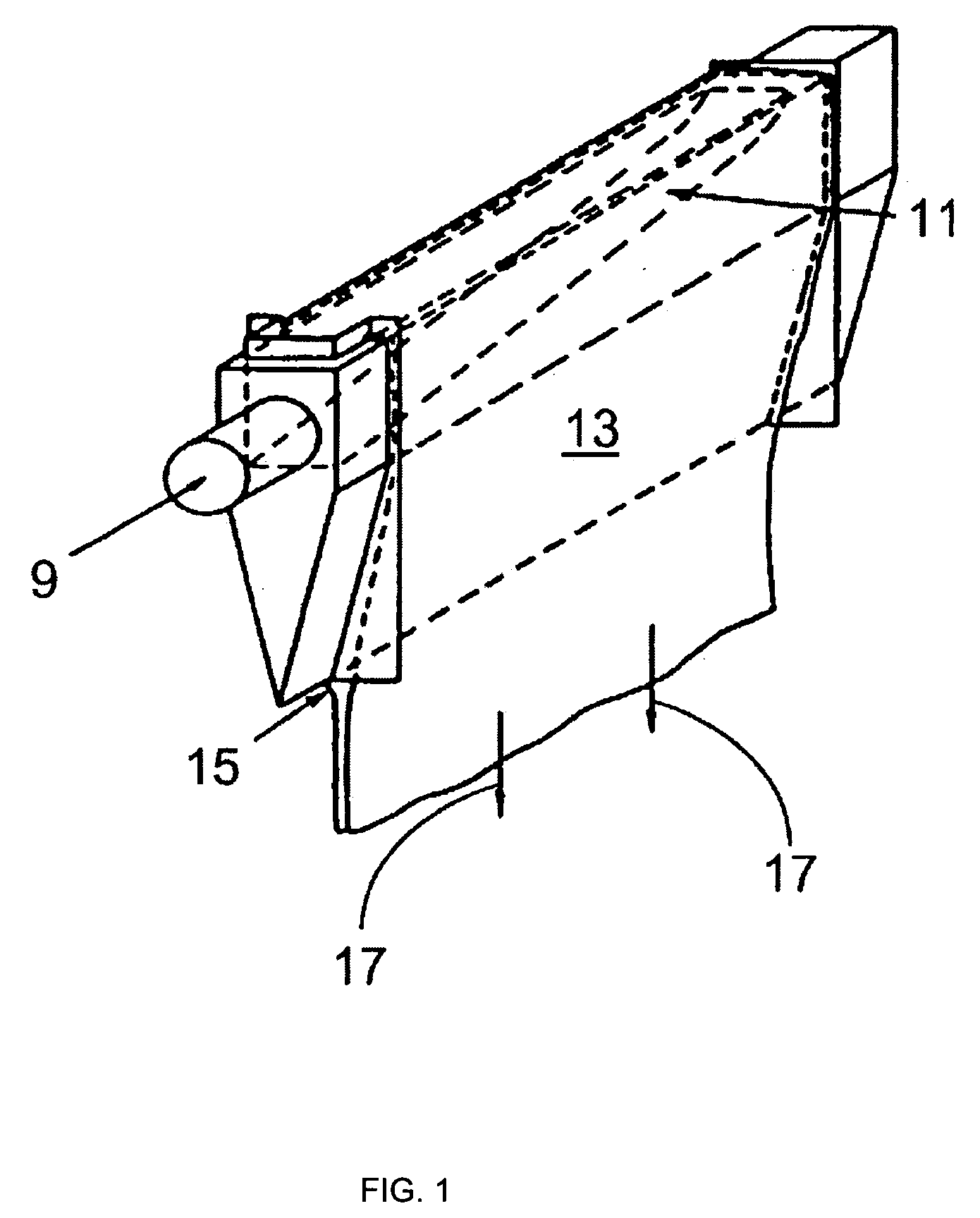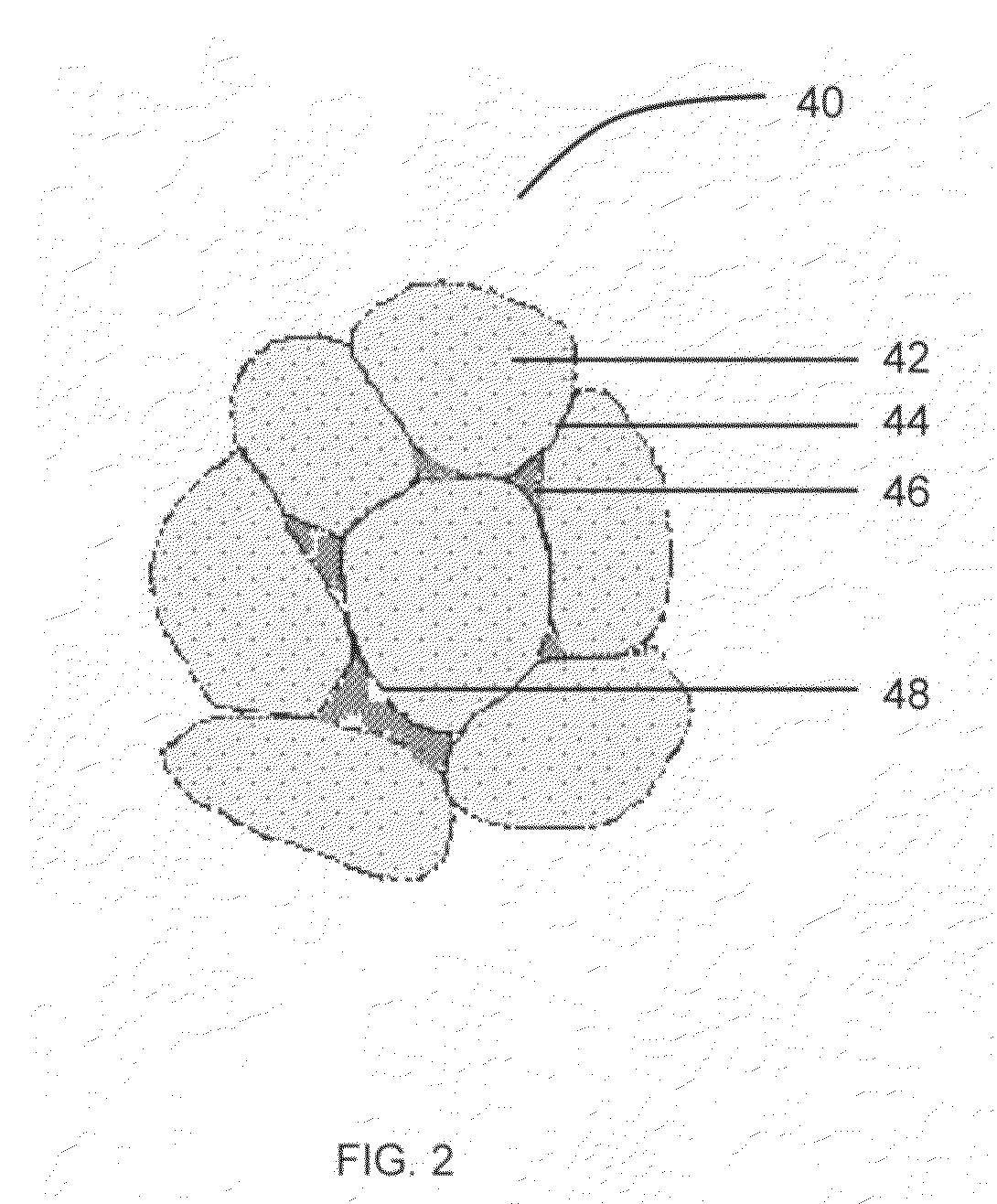Refractory ceramic composite and method of making
a technology of refractory ceramics and composites, applied in the field of refractory ceramic materials, can solve problems such as limiting their useful li
- Summary
- Abstract
- Description
- Claims
- Application Information
AI Technical Summary
Benefits of technology
Problems solved by technology
Method used
Image
Examples
example 1
Synthesis of Zircon
[0060]In a first example, a zircon material was synthesized from a zircon precursor, in the absence of a preformed, commercial zircon. Approximately 250 grams of zirconium oxychloride (ZrOCl2.8H2O) was dissolved in approximately 125 grams of water by stirring under ambient conditions to form a clear solution. After complete dissolution of the zirconium oxychloride, approximately 116.46 grams of Ludox® HS-40 was added to the solution (molar ratio of 1:1 zirconium oxychloride to amorphous silica). The resulting precursor solution had a cloudy appearance, but maintained a stable suspension. The storage life of the precursor solution can be a period of multiple months or more. Ammonium hydroxide was then added to the precursor solution at a weight ratio of 1:3 with respect to the zirconium oxychloride. The resulting wet gel was then dried at a temperature of about 100° C. to 120° C. for 24 hours. After drying, the powder was fired to form zircon. FIG. 3 illustrates th...
example 2
Fabrication of Isopipe from Zircon Precursor Powder and Preformed Zircon
[0061]In a second example, a mixture of a powdered zircon precursor and a preformed zircon was prepared. A powdered zircon precursor was prepared according to the procedure of Example 1 (prior to firing). A Processall® mixer was then used to disperse agglomerates of the powdered zircon precursor in an aqueous solution. The dispersed zircon precursor was then mixed with preformed zircon having a D50 particle size of 7 μm. The resulting mixture was extruded in the form of an isopipe bar and fired at about 1,600° C. for 6 hours. As in Example 1, the zircon precursor converts to zircon during firing. The density of the fired isopipe bar was about 3.37 g / cm3.
example 3
Fabrication of Isopipe from Zircon Precursor Solution and Preformed Zircon
[0062]In a third example, a mixture was prepared of a zircon precursor solution and a preformed zircon having a D50 particle size of 7 μm. A zircon precursor solution was prepared according to the procedure of Example 1 (prior to drying). The surface of the preformed zircon was coated with the zircon precursor solution by ball milling the mixture. After milling, the resulting powder was dispersed using a micronizer, and sifted through a 325 mesh (approximately 3.
[0063]Various modifications and variations can be made to the compositions, articles, devices, and methods described herein. Other aspects of the compositions, articles, devices, and methods described herein will be apparent from consideration of the specification and practice of the compositions, articles, devices, and methods disclosed herein. It is intended that the specification and examples be considered as exemplary.
PUM
| Property | Measurement | Unit |
|---|---|---|
| Temperature | aaaaa | aaaaa |
| Temperature | aaaaa | aaaaa |
| Temperature | aaaaa | aaaaa |
Abstract
Description
Claims
Application Information
 Login to View More
Login to View More - R&D
- Intellectual Property
- Life Sciences
- Materials
- Tech Scout
- Unparalleled Data Quality
- Higher Quality Content
- 60% Fewer Hallucinations
Browse by: Latest US Patents, China's latest patents, Technical Efficacy Thesaurus, Application Domain, Technology Topic, Popular Technical Reports.
© 2025 PatSnap. All rights reserved.Legal|Privacy policy|Modern Slavery Act Transparency Statement|Sitemap|About US| Contact US: help@patsnap.com



